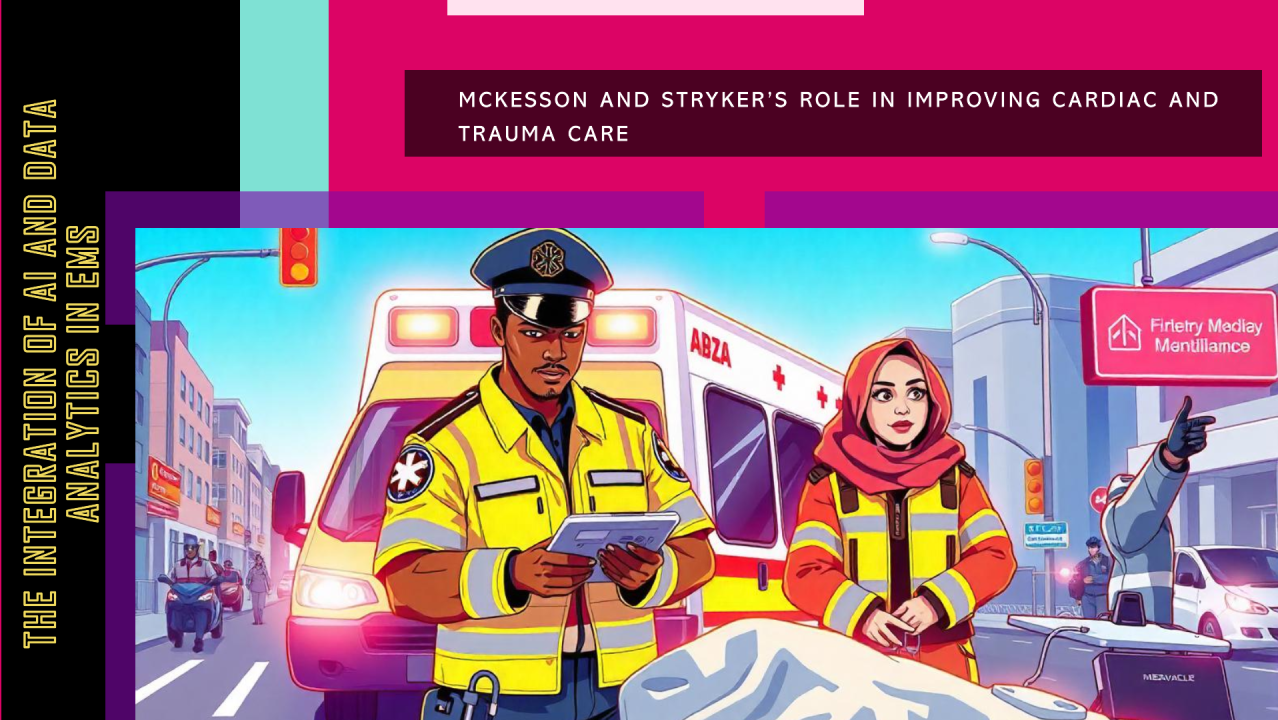1. What Are the Key Market Trends in Cardiac Care, Trauma Injuries, and Respiratory Care in Emergency Medical Services in 2024?
As the Emergency Medical Services (EMS) sector continues to evolve in 2024, several key trends are shaping the landscape of cardiac care, trauma injuries, and respiratory care.
These areas remain critical for EMS providers, and technological advancements are playing a central role in transforming how pre-hospital care is delivered.
Cardiac Care Innovations
Cardiac emergencies remain one of the leading causes of EMS calls. The rise of advanced cardiac care technologies like automated external defibrillators (AEDs), smart defibrillators, and wearable cardiac monitors is enabling EMS professionals to provide timely interventions.
Companies like Stryker Corp. are pioneering in the development of LUCAS chest compression systems, which improve the quality of chest compressions during cardiac arrest, leading to better patient outcomes.
Additionally, real-time data monitoring technologies are enhancing treatment decisions, offering predictive insights on cardiac events before they occur.
Trauma Care Advancements
Trauma care continues to be a priority, especially with increasing incidents of accidents and injuries globally.
The demand for trauma care kits, advanced airway management devices, and hemorrhage control tools is on the rise.
Companies like Bound Tree Medical are leading the charge with innovations such as Trauma Pak and Hemostatic Agents that help control bleeding in the field.
Moreover, portable ultrasound devices are being incorporated into trauma kits to allow for quick diagnostics during transport, improving the chances of survival for trauma patients.
Respiratory Care Innovations
In the respiratory care space, the use of advanced ventilators and oxygen therapy devices has grown significantly.
The need for portable positive pressure ventilation equipment, such as Philips Respironics' portable ventilators, has surged, especially during respiratory emergencies and the ongoing pandemic.
These innovations provide EMS teams with greater flexibility in managing patients with respiratory distress.
2. How Are Key Players in the EMS Sector Addressing Specialized Cardiac, Trauma, and Respiratory Care in Pre-Hospital Settings?
Leading companies in the EMS sector, including McKesson Medical-Surgical, Henry Schein, and Stryker Corp., are playing a vital role in advancing the field of specialized care during emergencies.
Their contributions are instrumental in improving both response times and patient outcomes.
Cardiac Care: Improving Emergency Response
McKesson Medical-Surgical offers a range of cutting-edge cardiac care solutions, including defibrillators and monitoring devices, which EMS providers rely on to stabilize patients before they reach the hospital.
The integration of telemedicine solutions and remote monitoring capabilities into ambulances enables emergency teams to consult with specialists in real time, providing a higher level of care during cardiac emergencies.
Trauma Care: Enhanced Field Capabilities
For trauma care, Stryker Corp. has made significant advancements with its STEMI (ST-Elevation Myocardial Infarction) systems and field-ready trauma equipment.
Their "XPS" Airway Systems provide immediate airway management in trauma scenarios, while Hemostatic Dressings and portable vital sign monitors from Medline Industries help prevent complications in critical cases.
Respiratory Care: Mobilizing Advanced Equipment
Respiratory support is paramount in the EMS setting, and Henry Schein has contributed by providing high-quality oxygen therapy equipment and CPAP machines that are essential for patients experiencing respiratory distress.
The use of high-flow nasal oxygen (HFNO) devices and non-invasive ventilators is growing, offering more effective pre-hospital respiratory support for patients suffering from conditions such as COPD and asthma exacerbations.
3. What Are the Regulatory and Reimbursement Challenges Impacting the Implementation of Advanced Cardiac, Trauma, and Respiratory Care Technologies in EMS?
While the integration of advanced technologies in the EMS sector brings significant benefits, it also comes with challenges related to regulation and reimbursement.
Understanding these challenges is crucial for both EMS providers and investors to evaluate the viability of new technologies.
Regulatory Hurdles in EMS Technology Adoption
One of the biggest challenges is navigating the FDA regulations for medical devices used in EMS applications.
For example, devices such as cardiac defibrillators and portable ventilators must meet strict safety standards before they can be deployed in the field.
EMS organizations must stay up to date with evolving standards and ensure compliance with medical device regulations to avoid delays in adoption.
Reimbursement Challenges
Another challenge is reimbursement for EMS services that use advanced technology.
Medicare, Medicaid, and private insurers may have differing policies regarding reimbursement for cardiac care devices, trauma management tools, and respiratory equipment used in the pre-hospital setting.
This can create financial burdens for EMS providers, especially when investing in high-cost equipment. Companies like McKesson Medical-Surgical and Stryker Corp. are addressing this by working with insurers to advocate for reimbursement policies that support the integration of these lifesaving technologies in emergency care.
4. How Does Data Analytics and Real-Time Monitoring Improve Patient Outcomes in Cardiac, Trauma, and Respiratory Care in EMS?
Data analytics and real-time monitoring are becoming essential in improving patient outcomes in cardiac, trauma, and respiratory care.
These technologies enable EMS providers to make informed decisions quickly, resulting in better care for patients and more efficient operations.
Cardiac Care: Leveraging Data for Early Intervention
In cardiac emergencies, real-time monitoring devices like ZOLL Medical’s X Series Defibrillator provide critical data, enabling EMS personnel to make informed decisions about treatment protocols.
By integrating data analytics with patient telemetry, EMS teams can anticipate critical events, optimize resource allocation, and deliver the right treatment at the right time.
Trauma Care: Predictive Insights for Better Response
With predictive analytics, EMS teams can now prioritize the most critical trauma patients using algorithms that analyze a range of real-time patient data, such as heart rate, blood pressure, and oxygen levels.
Companies like Stryker Corp. are integrating AI-powered diagnostics into their trauma kits, providing EMS teams with immediate insights to direct them to the most pressing cases efficiently.
Respiratory Care: Continuous Monitoring for Optimal Treatment
For respiratory care, continuous monitoring of oxygen saturation levels and blood gases is now possible thanks to portable monitoring devices from companies like Henry Schein and Medline Industries.
This allows EMS providers to track patients' conditions and adjust interventions in real time, ultimately improving outcomes for patients suffering from conditions like asthma, COPD, and acute respiratory distress syndrome (ARDS).
For more information visit at MarketResearchFuture
Other Trending Reports



